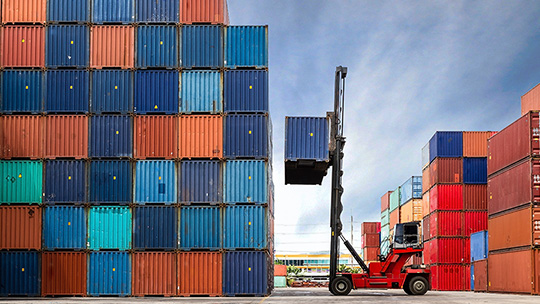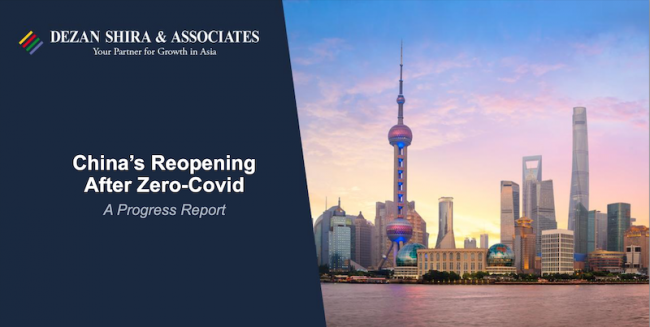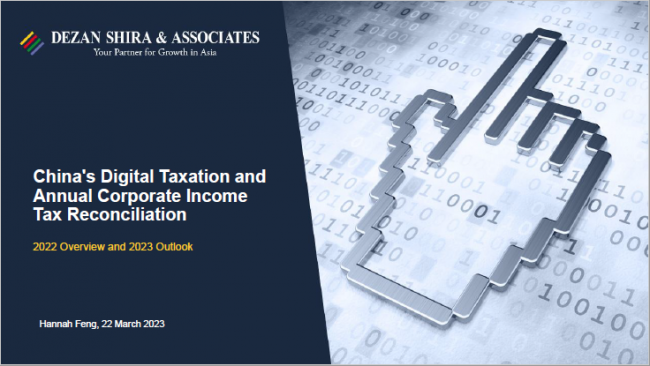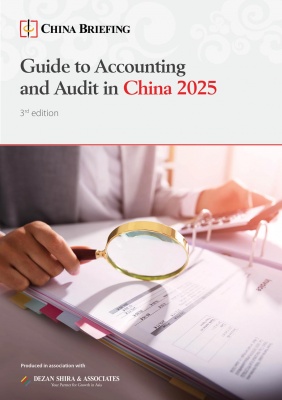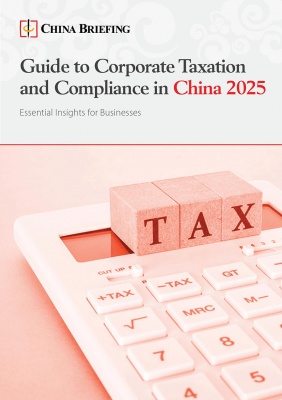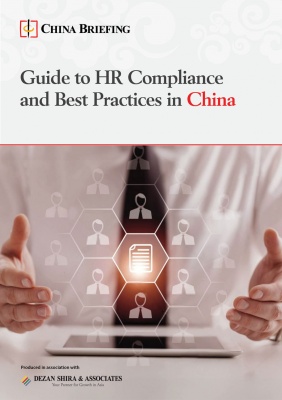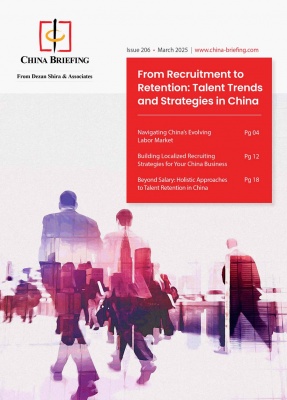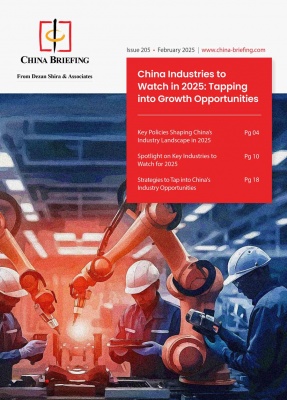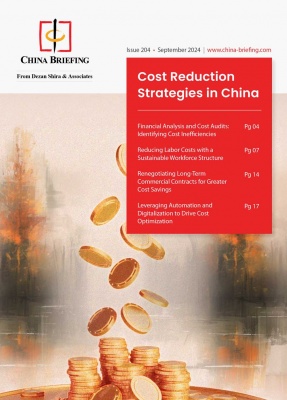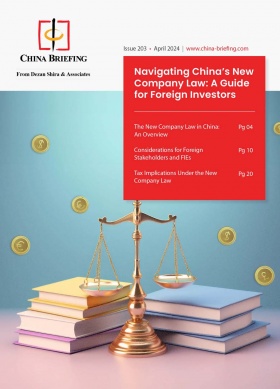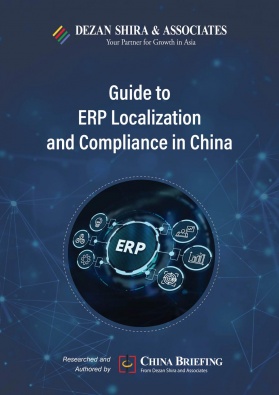China Manufacturing Tracker 2025
The second edition of The Asia Manufacturing Index by Dezan Shira & Associates is now out. The 2025 index provides essential insights into Asia’s dynamic industrial landscape, ranking eleven countries across eight categories, including tax policies, infrastructure, and innovation. Explore the rankings here.
The manufacturing industry is a cornerstone of China’s economy and a crucial sector underpinning the global economy. The manufacturing sector’s added value accounted for around 26 percent of China’s total GDP, underscoring its vital role in the nation’s economic structure. Despite a gradual shift towards a more service-oriented and high-tech economy, manufacturing remains a key driver of economic growth, providing substantial employment, innovation, and export revenue.
Globally, China’s manufacturing prowess is even more pronounced. In 2024, the country contributed around 30 percent of the global manufacturing added value, maintaining its position as the world’s largest manufacturing powerhouse for 15 consecutive years. This immense contribution underscores the sector’s critical role in global supply chains, influencing everything from consumer electronics to heavy machinery.
China’s manufacturing industry continues to attract significant foreign investment and the country remains a preferred destination for multinational companies due to its unique advantages. These include a vast and skilled labor force capable of producing a wide range of goods at competitive costs, comprehensive and efficient supply chains, and advanced infrastructure. Additionally, strong government support through policies, subsidies, and incentives further enhances China’s appeal as a manufacturing hub.
The importance of China’s manufacturing industry extends beyond its borders, playing a crucial role in the global economy. As a major supplier of goods worldwide, any shifts in China’s manufacturing sector have significant ripple effects across global markets, highlighting its integral role in international trade and economic stability.
In this 2024-25 Manufacturing Tracker, China Briefing provides the latest data and information on China’s manufacturing industry to help foreign investors and analysts stay up-to-date with the latest economic indicators, resources, and policies impacting this vast industry.
Key indicators of the China manufacturing industry
Jump to:
- Manufacturing GDP
- Manufacturing added value
- Manufacturing PMI
- Manufacturing export
- Fixed asset investment
- Foreign direct investment
- Labor costs
Manufacturing GDP
Although the share of manufacturing within the economy has steadily shrunk over the past few decades, it remains the single largest contributing sector to economic growth, consistently accounting for over a quarter of China’s total GDP.
In 2024, manufacturing GDP reached RMB 33.55 trillion (US$4.67 trillion), up 6.0 percent year-on-year and accounting for around 24.86 percent of total GDP.
| Quarterly Manufacturing GDP | ||
| Quarter | Manufacturing GDP (RMB trillion) | Percent of total GDP (%) |
| Q1 2025 | 8.2114 | 25.76 |
| 2024 (full year) | 33.5507 | 24.86 |
| Q4 2024 | 8.9825 | 24.03 |
| Q3 2024 | 8.3698 | 25.14 |
| Q2 2024 | 8.6544 | 26.99 |
| Q1 2024 | 8.0143 | 27.04 |
| Q4 2023 | 8.854 | 25.45 |
| Q3 2024 | 8.3272 | 26.02 |
| Q2 2023 | 8.5079 | 27.62 |
| Q1 2023 | 7.9567 | 27.92 |
| Source: National Bureau of Statistics; China Briefing | ||
Manufacturing added value
Per the National Bureau of Statistics (NBS)’s definition, the industrial value-added growth rate, or the industrial growth rate, is an indicator used to reflect the degree of change in the volume of industrial production over a certain period of time. Industrial value-added growth covers three broad sectors: mining, manufacturing, and the supply of utilities and resources. The manufacturing value-added growth rate is therefore an indicator of the production volume within the manufacturing sector alone.
This indicator can be used to judge the short-term trend of the industrial economy and the degree of economic prosperity. It also acts as an important reference and basis for formulating and adjusting economic policies and implementing macroeconomic regulation.
Except for August, China’s manufacturing value-added growth has remained above 5 percent in 2024.
| Monthly Growth in Manufacturing Added Value | |
| Month | Year-on-year growth (%) |
| Mar 2025 | 7.9 |
| Jan to Feb 2025 | 6.9 |
| 2024 (full year) | 6.1 |
| Dec 2024 | 7.4 |
| Nov 2024 | 5.4 |
| Oct 2024 | 5.3 |
| Sep 2024 | 5.4 |
| Aug 2024 | 4.5 |
| Jul 2024 | 5.3 |
| Jun 2024 | 5.5 |
| May 2024 | 6 |
| Apr 2024 | 7.5 |
| Mar 2024 | 5.1 |
| Jan to Feb 2024 | 7.1 |
| Source: National Bureau of Statistics | |
Manufacturing PMI
The Manufacturing Purchasing Managers’ Index (PMI) is a valuable tool for investors to gauge the current state of China’s manufacturing industry. It is an indicator of the economic health of the manufacturing sector, based on surveys of purchasing managers across various industries.
According to the NBS, manufacturing PMI in China is calculated by weighting five classification indices, which in turn are weighted depending on their leading impact on the economy. These indices are:
- The new order index, weighted at 30 percent;
- The production index, weighted at 25 percent;
- The employee index, weighted at 20 percent;
- The supplier delivery time index, weighted at 15 percent; and
- The raw material inventory index, weighted at 10 percent.
A PMI of over 50 percent reflects an expansion in the industry compared with the previous month, whereas a PMI of below 50 percent reflects a contraction compared with the previous month (National Bureau of Statistics).
| Monthly Manufacturing Purchasing Managers Index | |
| Month | PMI (%) |
| Mar 2025 | 50.5 |
| Feb 2025 | 50.2 |
| Jan 2025 | 49.1 |
| Dec 2024 | 50.1 |
| Nov 2024 | 50.3 |
| Oct 2024 | 50.1 |
| Sep 2024 | 49.8 |
| Aug 2024 | 49.1 |
| Jul 2024 | 49.4 |
| Jun 2024 | 49.5 |
| May 2024 | 49.5 |
| Apr 2024 | 50.4 |
| Mar 2024 | 50.8 |
| Feb 2024 | 49.1 |
| Jan 2024 | 49.2 |
| Source: National Bureau of Statistics | |
Manufacturing export
Manufacturing exports can help investors understand the current demand for China’s manufacturing goods. When exports are strong, it typically reflects robust global demand for Chinese-made goods. High export levels also suggest that China remains competitive in international markets, maintaining its position as a global manufacturing leader.
Conversely, a decline in manufacturing exports might signal weakening demand, potential challenges in production, or increased competition from other countries. This can be a warning sign for investors about potential slowdowns in the sector.
Per the NBS, the export delivery value refers to the value of products exported by industrial enterprises themselves (including exports to Hong Kong, Macao, and Taiwan) or entrusted to foreign trade departments for export, as well as the value of products produced by foreign merchants based on samples, materials and parts supplied, assembly, and compensation trade.
The industrial export delivery value covers exports from the three major industrial subsectors: mining, manufacturing, and the supply of utilities and resources.
According to both the work bank data and the data from China’s General Administration of Customs, manufacturing export accounts for over 90 percent of China’s total exports. In 2024, China exported RMB 25.17 trillion (approximately US$3.53 trillion) worth of manufacturing products, while the total goods export amounted to RMB 25.45 trillion (approximately US$3.57 trillion), with manufacturing products accounting for 98.9 percent of the total. In this context, manufacturing exports account for a larger percentage of the overall industry exports. This outcome is primarily due to the exclusion of agricultural exports from the total goods trade.
As there is currently no publicly available data on manufacturing export delivery value, below we use industrial export delivery value to reflect the manufacturing exports.
| Industrial Export Delivery Value | ||
| Month | Export value (RMB trillion) | Year-on-year growth (%) |
| Mar 2025 | 1.3493 | 7.7 |
| Jan to Feb 2025 | 2.2751 | 6.2 |
| 2024 (full year) | 15.4338 | 5.1 |
| Dec 2024 | 1.4394 | 8.8 |
| Nov 2024 | 1.3556 | 7.4 |
| Oct 2024 | 1.3438 | 3.7 |
| Sep 2024 | 1.4099 | 3.4 |
| Aug 2024 | 1.2994 | 6.4 |
| Jul 2024 | 1.2785 | 6.4 |
| Jun 2024 | 1.3175 | 3.8 |
| May 2024 | 1.2571 | 4.6 |
| Apr 2024 | 1.2328 | 7.3 |
| Mar 2024 | 1.2671 | 1.4 |
| Jan to Feb 2024 | 2.1466 | 0.4 |
| Source: National Bureau of Statistics | ||
Fixed asset investment
Fixed asset investment (FAI) in manufacturing provides investors with valuable insights into the long-term confidence and growth prospects of China’s manufacturing industry. When businesses are increasing investments in machinery, infrastructure, and factory expansions, it indicates optimism about future demand and a belief in the industry’s growth potential.
However, a decline in FAI may signal caution or uncertainty within the sector, potentially reflecting concerns about future demand, profitability, or economic conditions. They may also reflect underlying challenges, such as market access difficulties or regulatory hurdles that make it harder for companies to operate or expand.
The NBS defines FAI as the total workload of constructing and purchasing fixed assets completed in a certain period, as well as the related expenses, expressed in monetary terms.
| Growth in Manufacturing Fixed Asset Investment | |
| Month | % |
| Jan to Mar 2025 | 9.1 |
| 2024 (full year) | 9.2 |
| Nov 2024 | 9.3 |
| Oct 2024 | 9.3 |
| Sep 2024 | 12.3 |
| Aug 2024 | 9.1 |
| Jul 2024 | 9.3 |
| Jun 2024 | 9.5 |
| May 2024 | 9.6 |
| Apr 2024 | 9.7 |
| Mar 2024 | 9.9 |
| Jan – Feb 2024 | 9.4 |
| Source: National Bureau of Statistics | |
Foreign direct investment
Manufacturing continues to be a major magnet for foreign direct investment in China, absorbing 26.77 percent of total FDI in 2024.
FDI can provide an important indicator of international confidence in China’s manufacturing sector. Increasing FDI suggests that foreign companies see it as a profitable and stable environment for long-term investments. Conversely, a decline in FDI may indicate waning confidence due to factors like rising costs, regulatory challenges, or geopolitical tensions, suggesting potential vulnerabilities in the sector.
It is important to note that FDI figures may be skewed by a few large investment projects in some reporting months or years. Large investments by a few multinationals can disproportionately influence the numbers, and FDI figures, therefore, do not always reflect the accessibility of the industry to foreign companies as a whole.
| FDI in Manufacturing | |
| Month | Actual utilized foreign capital (RMB billion) |
| Jan to Mar 2025 | 71.51 |
| 2024 (full year) | 221.21 |
| Dec 2024 | 18.71 |
| Nov 2024 | 10.18 |
| Oct 2024 | 13.08 |
| Sept 2024 | 15.14 |
| Aug 2024 | 9.62 |
| Jul 2024 | 12.62 |
| Jun 2024 | 24.75 |
| May 2024 | 13.42 |
| Apr 2024 | 22.63 |
| Jan – Mar 2024 | 81.06 |
| Source: Ministry of Commerce | |
Costs and factors of production in the China manufacturing industry
Labor costs
Labor costs in China have risen substantially in recent decades, with average salaries more than doubling over the last decade.
Annual average salaries are considerably higher in the public sector than the private sector across the majority of industries, including manufacturing. In 2023, the urban annual average salary in the public manufacturing industry was RMB 103,932 (US$14,568) an increase of 6.6 percent from 2022, whereas in the private sector, it reached RMB 71,762 (US$10,059), up 6.5 percent from 2022.
| Urban Annual Average Wages in Private and Non-Private Manufacturing Sector | ||||
| Private | Public | |||
| Year | Salary (RMB) | Growth rate (%) | Salary (RMB) | Growth rate (%) |
| 2023 | 71,762 | 6.5 | 103,932 | 6.6 |
| 2022 | 67,352 | 5.3 | 97,528 | 5.5 |
| 2021 | 63,946 | 10.4 | 92,459 | 11.7 |
| 2020 | 57,910 | 9.6 | 82,783 | 5.9 |
| Source: National Bureau of Statistics | ||||
Manufacturing salaries have grown at an annual average rate of 9.1 percent and 9.5 percent in the private and non-private sectors respectively since 2013. Public sector manufacturing salaries rose from RMB 46,431 (US$6,493) in 2013 to RMB 103,932 (US$14,568) in 2023, while private sector manufacturing salaries rose from RMB 32,035 (US$4,479) to RMB 71,762 (US$10,059).
| Average Annual Wages in the Manufacturing Industry (RMB) | ||||||
| Year | Overall average | Mid- to higher-level management | Professional and technical personnel | Administrative office staff and security personnel | Social production services and life services personnel* | Production and related personnel |
| 2023 | 92,538 | 186,584 | 134,086 | 95,465 | 93,318 | 74,312 |
| 2022 | 86,933 | 176,313 | 124,960 | 90,322 | 88,294 | 70,642 |
| 2021 | 82667 | 167097 | 117611 | 85614 | 83429 | 68024 |
| 2020 | 74,641 | 152,996 | 106,681 | 78,229 | 76,036 | 61,324 |
| Note: Wages of companies with an annual average main business income of over RMB 20 million.
* Personnel engaged in commodity wholesale and retail, transportation, warehousing, postal and express delivery, information transmission, software and information technology, accommodation and catering, finance, leasing and business, environmental protection, culture, sports and entertainment, etc. Source: National Bureau of Statistics |
||||||
China also continues to raise its minimum wages, which vary between different provinces and cities. As of April 2025, Shanghai has the highest monthly minimum wage, at RMB 2,690 per month (US$378). Beijing has the highest hourly minimum wage at RMB 26.4 per hour (US$3.7).
For more information on China’s average wages, see our article: China’s Average Wages – Trends and Implications for Businesses.
For up-to-date information on China’s minimum wages, see our article: A Guide to Minimum Wages in China.
Utility costs
China’s electricity grid is divided into six main regions: Northwestern China, Northern China, Central China, Northeastern China, Eastern China, and Southern China. The State Grid Corporation of China (SGCC) supplies electricity to all of the regions except Southern China, which is serviced by China Southern Power Grid (CSG) (covering the provinces of Guangdong, Guangxi, Yunnan, Guizhou, and Hainan). SGCC and CSG are both state-owned companies and are tasked with periodically setting electricity prices for each region based on a set of national standards.
China’s regional electricity pricing is governed by the Pricing Method for Regional Power Grid Transmission Prices, a document formulated by the National Development and Reform Commission (NDRC).
Electricity prices are adjusted at regular intervals depending on varying factors such as costs of fuel, demand, and government policies.
China’s water utility industry is much more scattered, with numerous utility companies providing services across different stages of the supply chain and in different regions. Among the largest companies are Beijing Enterprises Water Group (BEWG), Middle Environmental Protection Water Affair Investment Limited Company, China Water Affairs, Beijing Capital Eco-Environment Protection Group, and SUEZ Group.
Under China’s Water Law, water supply prices are determined in accordance with specific measures formulated by provincial-level governments (or above) in conjunction with the water administration authorities or other water supply administration authorities. This means water prices will vary considerably from region to region. Regional water pricing must nonetheless adhere to the Measures for the Administration of Urban Water Supply Prices, for urban areas.
For more information on China’s power rates, see our article: China’s Industrial Power Rates: A Guide for Investors.
China manufacturing industry clusters
China is home to over 2,000 industry clusters, areas where businesses and industries are consolidated to foster collaboration and competition. These clusters typically focus on specialized sectors, such as electronics, textiles, automotive manufacturing, or aviation, among many others. The proximity of these businesses allows for efficient supply chain integration, reducing costs and improving responsiveness.
The majority are located in economic hubs in the eastern and central provinces, with the distribution of different industrial sectors across the country often linked to each region’s natural resources, traditional industries, labor force, and production costs. However, with the emergence of new technology and advanced manufacturing industries and concerted efforts from the central and local governments, the western and northern provinces have begun to cultivate new industry clusters focused on modern sectors.
For more information on China’s industry clusters, including breakdowns of different industries, see our article China’s Industry Clusters – A Comprehensive Overview.
Preferential policies and tax incentives for the manufacturing industry
China provides a range of preferential policies for companies in the manufacturing industry, including tax incentives to help lower value-added tax (VAT), corporate income tax (CIT), and tax deductions for research and development (R&D). The preferential policies are extensive, and many apply to multiple different industries, not exclusively manufacturing. The table below contains a non-exhaustive list of the incentive policies currently available for companies in the manufacturing sector.
China’s tax authority reminds taxpayers that they can apply for the super deduction of R&D expenses for the first three quarters of 2024 during the October filing period. When prepaying CIT for the third quarter in October (for quarterly prepayments) or in September (for monthly prepayments), companies have the option to apply the super deduction policy for R&D expenses incurred in the first three quarters of the year. This decision should be based on their profit and loss situation, R&D expense accounting, and the total amount of R&D expenses.
For more information, see our article: China Tax Filing: Apply for Super Deductions of R&D Expenses for Q1-3 2024 in October
| Tax Incentives for the Manufacturing Industry | |||
| Incentive | Details | Conditions | Effective period |
| VAT credit refund policy | VAT credit refund policy for companies in the manufacturing industry that meet the conditions for deferring tax refunds. | VAT sales generated from business activities in the eligible manufacturing industry must account for more than 50 percent of total VAT sales. | 2022 onwards |
| VAT reduction for small-scale taxpayers | VAT levied at a reduced rate of 1 percent for small-scale taxpayers subject to a 3 percent tax rate on taxable sales revenue. | Small-scale taxpayers who are subject to the reduced 1 percent tax rate must issue VAT invoices at the 1 percent tax rate. Taxpayers can choose to waive the tax reduction and issue VAT special invoices for that sales revenue. | January 1, 2023, to December 31, 2027 |
| VAT exemption for small-scale taxpayers | VAT exemption for small-scale taxpayers with monthly sales of RMB 100,000 (US$13,861) or below. | Small-scale taxpayers that have VAT taxable sales exceeding RMB 100,000 in total in a given month, but which do not exceed RMB 100,000 when excluding the sales of real estate, the sales revenue from goods, labor, services, and intangible assets obtained is exempt from VAT. | January 1, 2023, to December 31, 2027 |
| End-of-period VAT deduction from the tax basis of certain taxes and fees | Deduction of the refunded VAT amount from the tax calculation basis of the urban maintenance and construction tax, education surcharge, and local education surcharge. | Applicable to general taxpayers implementing VAT refunds at the end of the period. | From July 27, 2018 onward |
| VAT exemption for technology transfer, technology development, and related technical consultation and technical services | VAT exemption for technology transfer, technology development, and related technical consultation and technical services. | VAT payers who provide technology transfer and technology development. | From May 1, 2016 onward |
| 15 percent CIT rate for high-tech companies | Reduced 15 percent CIT rate for high-tech manufacturing companies identified for support from the state. | Companies that are resident in the Chinese mainland and continuously engaged in research, development, and technology transfer within the “National Key Supported High-tech Fields,” have independently formed core intellectual property rights, and conduct business activities based on this. | Indefinite |
| 15 percent CIT rate in development zones | Reduced 15 percent CIT rate for eligible companies that are established in certain development zones and lesser-developed regions. | Companies that have “substantial operations” within one of the dedicated regions and are engaged in one of the region’s “encouraged industries”.
Eligible zones/regions:
|
Varies by region. |
| CIT reduction and exemptions for qualified technology transfer income | Within a given tax year:
|
Resident enterprises engaged in technology transfer. | From 2015 onward |
| Reduced CIT rate for Small and Low-Profit Enterprises (SLPEs) | Reduced 20 percent CIT rate | Companies with annual taxable income under RMB 3 million (US$458,500); companies with less than 300 employees; and companies with a total asset value of less than RMB 50 million (US$7.7 million). | January 1, 2022/2023 to December 31, 2027 |
| R&D pre-tax super deduction | 200 percent pre-tax deduction of the expenses incurred in conducting R&D activities that do not form intangible assets for resident companies | Applicable to expenses related to eligible R&D activities, including expenses related to systematic activities with clear objectives continuously carried out by enterprises to obtain new scientific and technological knowledge, creatively apply new scientific and technological knowledge, or substantially improve technology, products, or services and processes. | Indefinite. |
In addition to the tax incentives, China currently also provides the following fee reduction policies for companies in the manufacturing industry:
| Fee Reduction Policies for the Manufacturing Industry | |||
| Incentive | Details | Conditions | Effective period |
| Reduction of “six taxes and two fees” for small-scale taxpayers | Reduced 50 percent levy rate for:
|
Applicable to small-scale VAT taxpayers, SLPEs, and individually owned businesses. | January 1, 2022 to December 31, 2027 |
| Reduction of employment security fund payments for disabled persons |
|
Companies that meet the requisite disability employment ratios. | January 1, 2023 to December 31, 2027 |
For more information on tax incentives and preferential policies for companies in the manufacturing industry, see our articles: China’s Tax Incentives for the Manufacturing Sector in 2023 and Tax Incentives for Manufacturing Companies in China in 2024.
(This tracker was first published on August 22, 2024, and was last updated on April 18, 2025.)
About Us
China Briefing is one of five regional Asia Briefing publications, supported by Dezan Shira & Associates. For a complimentary subscription to China Briefing’s content products, please click here.
Dezan Shira & Associates assists foreign investors into China and has done so since 1992 through offices in Beijing, Tianjin, Dalian, Qingdao, Shanghai, Hangzhou, Ningbo, Suzhou, Guangzhou, Haikou, Zhongshan, Shenzhen, and Hong Kong. We also have offices in Vietnam, Indonesia, Singapore, United States, Germany, Italy, India, and Dubai (UAE) and partner firms assisting foreign investors in The Philippines, Malaysia, Thailand, Bangladesh, and Australia. For assistance in China, please contact the firm at china@dezshira.com or visit our website at www.dezshira.com.
- Previous Article China’s New Instant VAT Refund Policy: Boost to Tourism and Retail, Amid Tariff Tensions
- Next Article China Clarifies Cross-Border Data Transfer Rules: Key Takeaways from Official Q&A





